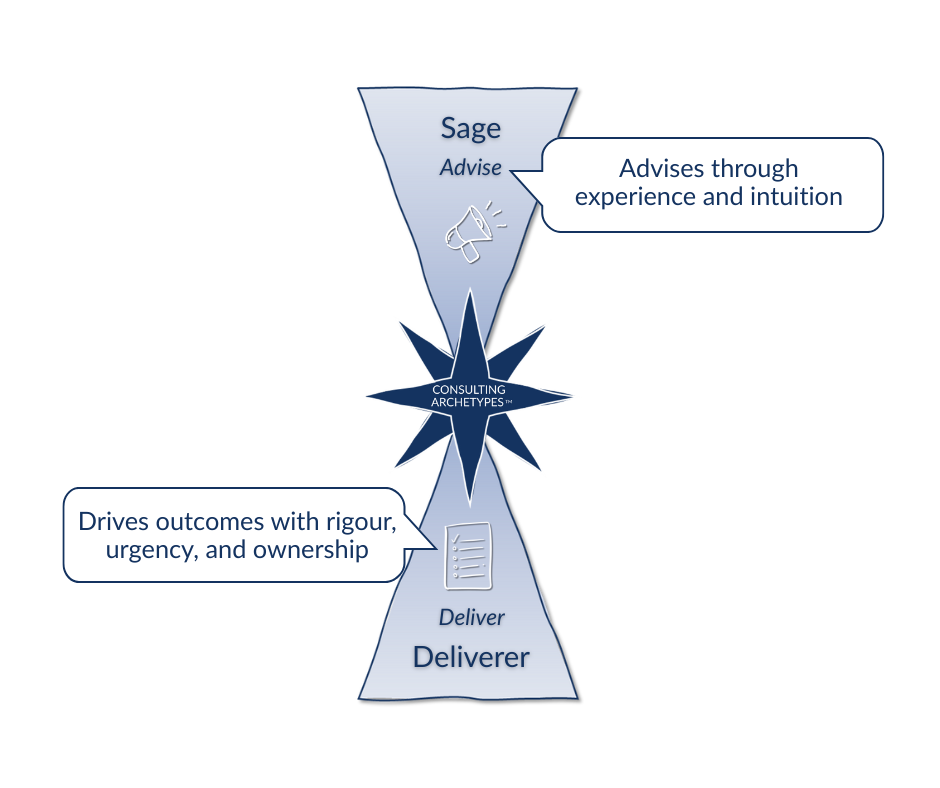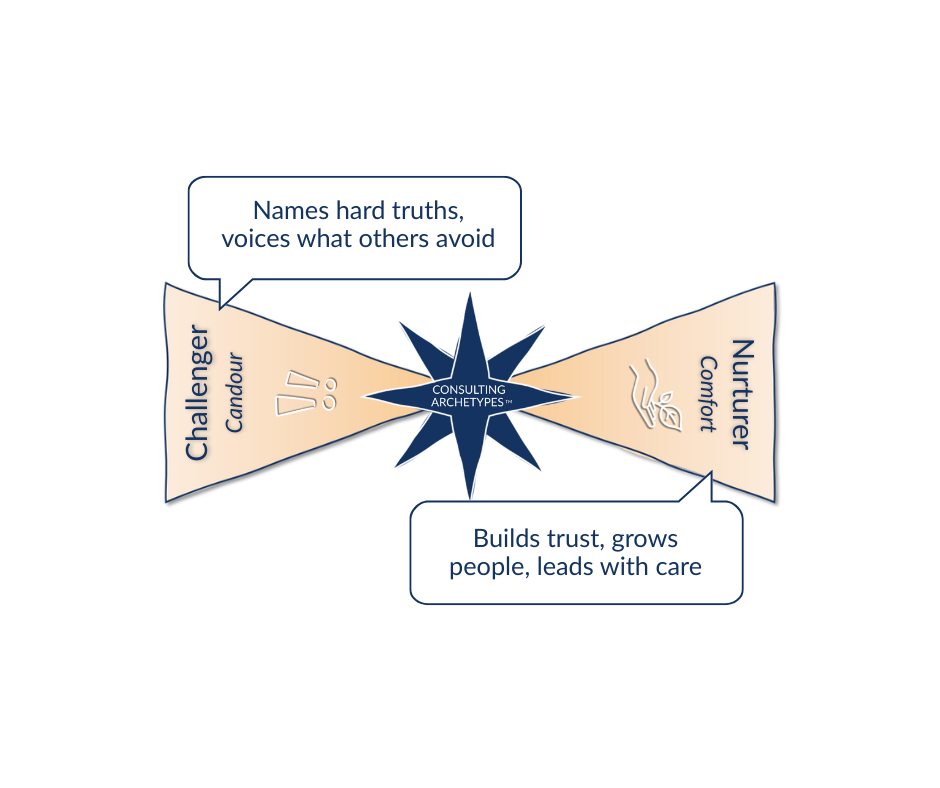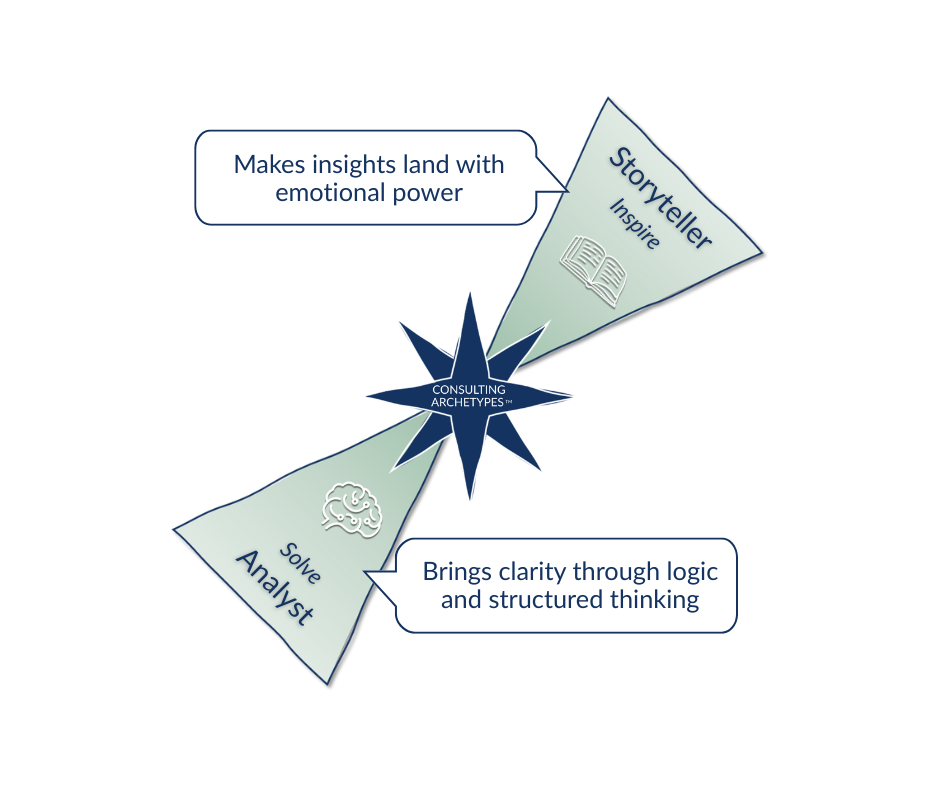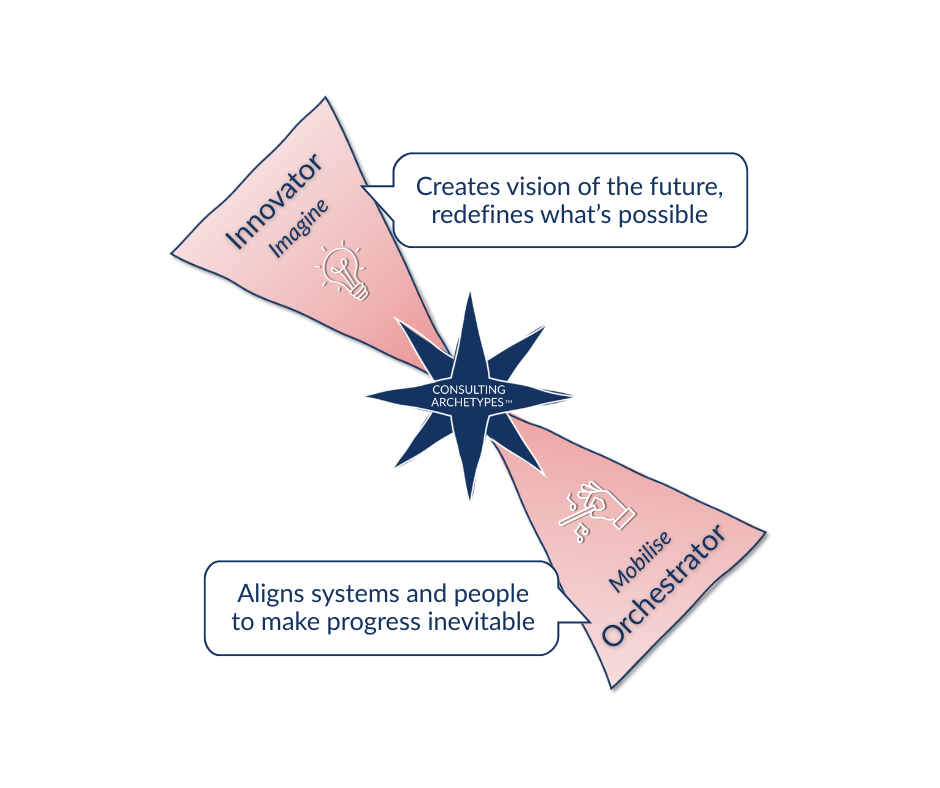The 8 Consulting Archetypes: Your Map To Consulting Mastery and Client Success
Skills are important - but how you show-up with clients can change the game
“The analysis is great, but you need to get out of the detail and see the bigger picture”
“What’s the so-what of this slide?”
“We’re under pressure for this deadline - we didn’t get the data from the client in time. On reflection I should have engaged them earlier and helped them see why it mattered”
“We want to build a feedback culture, but we’re all just a bit too nice”
Sound familiar? Consulting is a complex job. You have to wear a lot of hats. Bring your experience; but ground it in the latest data. Come up with creative ideas; but make sure they are practical. Build trusted relationships with your clients; but speak the truth when it’s needed.
I’ve been wrestling with this for a while. I founded a business committed to training and developing consulting teams, and there’s an undeniable complexity in being a consultant. My mission is to help you simplify and spot different ways to be successful.
That’s where this new concept comes in: The Consulting Archetypes.
This isn’t another consulting competency framework. It’s not about skills. This is an approach we haven’t seen in consulting before. I’m excited to share it.
What are Archetypes?
Archetypes are timeless patterns of human behaviour. Psychologist Carl Jung introduced them as “universal images” that show up in stories, myths, and relationships. These are ways humans behave, consciously or unconsciously.
You can think of them as energies, or ways of being - a mindset you can step into when you need it.
Outside of consulting I support people on their personal growth journeys, particularly through an organisation called the Mankind Project. Through that work I discovered Robert Moore and his articulation of the Warrior / Lover / Magician / Sovereign archetypes - something I’ve found powerful personally in many situations.
Moore argued that each of us carries these energies, and that maturity comes from accessing them consciously rather than being unconsciously ruled by them.
After finding this useful in my personal life I started seeing similar archetypes in my consulting work - a profession where success is rooted as much in how you show up as it is in what you know. Inspired by Moore’s work I developed the Consulting Archetypes to help you with the unique demands of being a consultant.
As consultants we move through very different contexts: running a SteerCo meeting, designing a new operating model, coaching a junior team member, handling ‘scope creep’ with a client, crunching data, leading a project room, and many more.
Each situation demands a different mode of being. Often we will default to the one or two modes that feel most natural - our comfort zone. An Analyst who stays buried in the numbers even when the client needs a story. A Deliverer who hits deadlines but forgets to nurture their team. A Storyteller who wins the room but drifts away from pragmatic reality.
By naming these archetypes, we give ourselves a new language:
To recognise our defaults
To stretch into new behaviours consciously
To coach our colleagues by saying, ‘For this meeting, you’ll need to step into Storyteller mode’
Ultimately, by mastering the Consulting Archetypes and using them consciously, we can become powerful and confident in all the consulting situations we find ourselves in.
The Eight Consulting Archetypes
Here’s an introduction to the eight Consulting Archetypes. They create a natural tension, as no-one can be all eight at the same time. They sit on axes, or the points of a compass, representing a balance of priorities between ideas and execution, people and content.
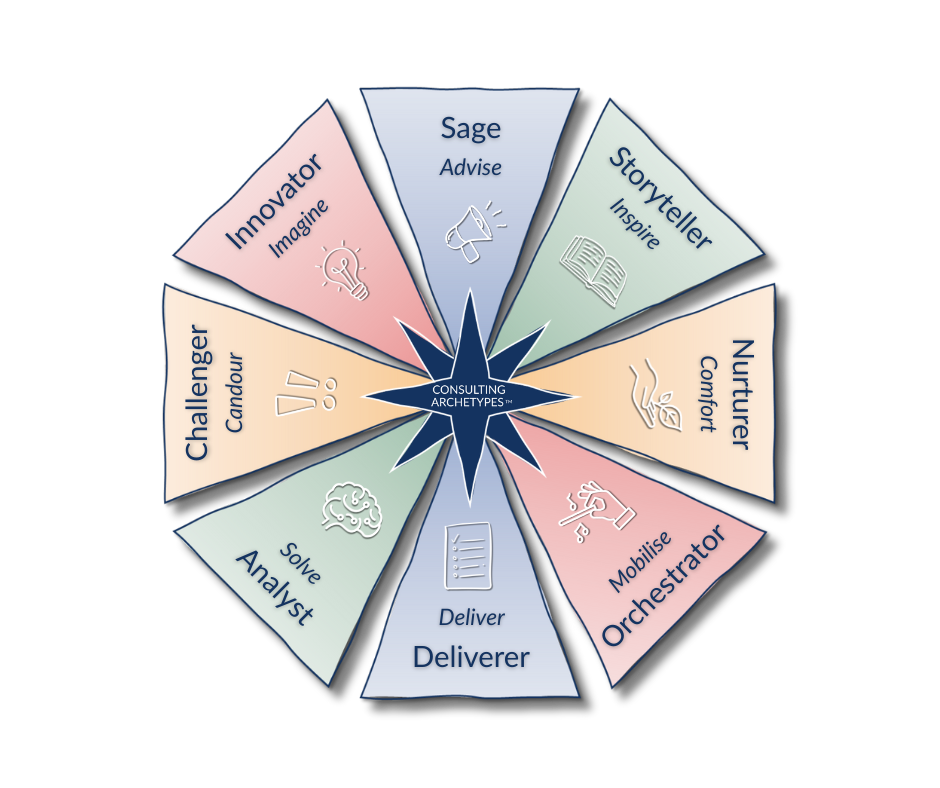
The ‘North star’ is the Sage - the experienced and trusted advisor, who has built good judgement over many years.
Opposite the Sage is the Deliverer - the consultant who rolls their sleeves up and gets things done. In the South, they are outward facing.
In the East we have the Nurturer - the caring consultant who helps people grow and builds close connections.
The Nurturer is contrasted with the Challenger in the West. A Challenger says what needs to be said in pursuit of honesty and truth.
For those familiar with the Radical Candour model of feedback, you may recognise that compassionate Radical Candour requires a balance of Nurturer and Challenger in equal measure.
Then we have the Analyst - gathering novel information and crunching data to solve problems that haven’t been solved before.
They sit in contrast to the Storyteller - the one who pulls information into a narrative that grabs attention, wins hearts and minds, and inspires people to take action.
That shift - from Analyst to Storyteller - is a classic challenge for junior consultants. The push to get to the ‘So what?’ and build out a punchy, clear, slide deck to summarise weeks of complex work.
On the final axis we have the Innovator - the creative mind, redefining what’s possible, breaking down limiting beliefs, and challenging existing paradigms.
And in tension with that, the Orchestrator - tasked with bringing people on the journey and aligning everything as a Project Manager would.
You will have a natural strength in two or three of the 8 Archetypes. You will also have opportunity to develop others. For each of the Consulting Archetypes there are skills you can develop, behaviours you can practice, as well as the mindset to step into.
Can anyone truly master all eight? Perhaps not. But the best consultants have figured out how to bring the archetype they need when they need - and that’s a powerful tool.
Too Much or Too Little?
If knowing which archetype to step into is a skill, consciously choosing how much of it to employ is mastery. Every archetype has shadow sides - too much or too little and you risk causing harm.
Here’s some examples that may resonate with you:
The Analyst:
At their best, brings clarity and truth
Overdone - they become an Ocean-Boiler drowning in detail
Under-used - they drift into a Guesstimator, making assumptions without facts or believing their hypothesis before they’ve tested it
The Challenger:
In balance, voices hard truths at the right time, in the right way so they land
When too much, they can be a Wrecking Ball, crashing through relationships
Or, when too little, they become a Peacemaker who fails to land the messages others need to hear
We can all slip into the shadow sides of an archetype - they’re part of the territory. By naming them we make it easier to catch ourselves and rebalance. Over time, you’ll begin to get clear on what it feels like to be in balance and using your chosen archetype the right amount, not too much or too little.
In future posts I’ll explore the shadow sides further and delve into what happens when we overuse or underuse an archetype.
Why this matters
For individuals, the Consulting Archetypes give a mirror: What’s my default? Where am I strong? Where do I need to flex?
For teams, they give a shared language: We’ve been too deep in Deliverer mode and we’re not taking clients with us - how can we bring more Storyteller to the next workshop?
And for leaders, they offer a coaching tool: For this client, we need some creative thinking - less Analyst, more Innovator.
Jung believed archetypes live in all of us, waiting to be expressed. Moore argued that maturity comes from holding them in balance. For consultants, I believe this is true.
The question is not, ‘Which archetype are you?’.
It’s, ‘Which archetype does this situation call for — and can you step into it consciously?’
Try this: Reflect on your last client interaction. Which Archetype was strongest for you? How did that influence the outcomes of that meeting? Could another Archetype have led to a different result?
This is the first time I’ve shared the Consulting Archetypes concept publicly. I’m fortunate to be able to test it with the 2k+ strong consulting community who will receive this article and I’d truly value your thoughts to help me refine it further. What has it brought up for you? How could you see it being useful in your consulting work?
Thank you for reading The Skilled Consultant. If you haven’t yet subscribed, please do so to receive all our articles direct to your inbox.
There are several other ways you can interact with Honeycomb Consulting Skills Training….
Connect with Deri Hughes (Founder & MD) on LinkedIn
Connect with Colin Mann (MD) on LinkedIn
Book a 30 minute intro call with Deri Hughes
Stay informed about our free workshops and webinars - follow Honeycomb on LinkedIn or visit our website.




